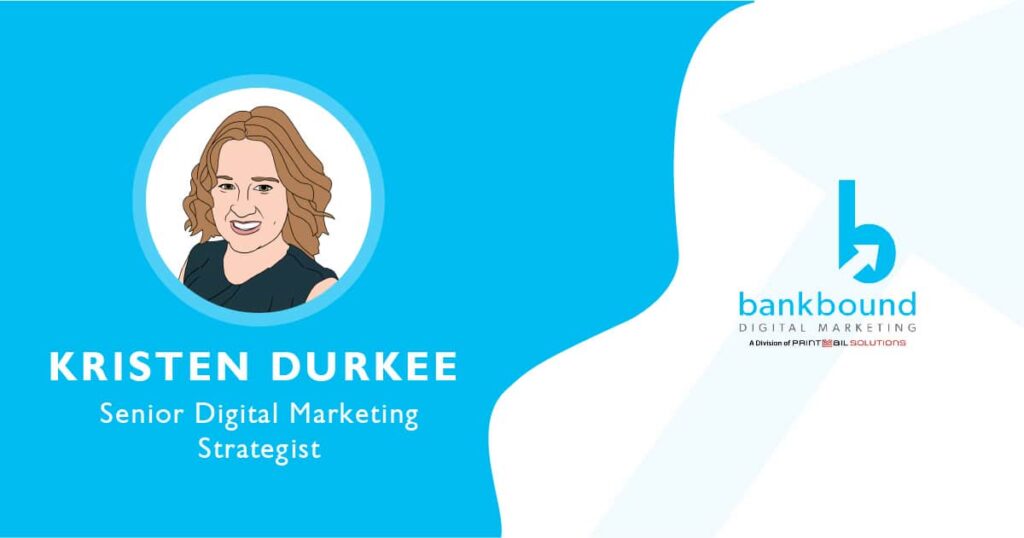Bank Marketing Strategy
Creating and Writing PPC Ads For Your Audience
Congratulations! You finally made the leap into the digital world and started your bank’s first Google Ads account. As you sit and stare at all the different options, you may be wondering… what now? While there are many different things you can do with a paid search campaign, your first step should be to identify who you want to reach with your ads. Then you can move on to using pay-per-click advertising to find and reach that target audience.

Step 1: Identify
Without knowing who you want to reach with your ads, it will be virtually impossible to write any ad copy or plan out any campaigns. Step back and take a second to identify who your priority customer is. Start with the product, and work backward. While yes, it is technically possible to throw our ads out there and hope for the best, that usually is not the most reasonable or cost-effective option. Identifying our target requires us to take a narrower look at our audience and get a bit more granular with who we are looking to sell to.
Let’s say you have a great mortgage rate special. Who do we want to target and get our ads in front of for this special? Perhaps a young millennial audience looking to purchase their first home? Or maybe you want to push a high-yield savings account to grow deposits. This may be great for an older demographic looking to earn high interest on disposable income.
Without identifying these target audiences, we won’t be able to properly strategize our ads campaigns. Different customers respond in different ways to different messages. You need to make sure you’re speaking to and reaching them in the right way.
Step 2: Keywords
After you’ve identified your target audiences, you need to make sure you are speaking their language. Different people search for things in different ways, using different verbiage. That means your keyword list needs to be varied and relevant.
When you give Google a keyword list, you are telling it what words are important to your campaign and what you would like to spend money on. Having keywords relevant to a particular topic is important, yes. However, if you’re not thinking like your target audience, you’re not going to reach the correct people. If we’re looking to reach first-time home buyers in a younger demographic, some relevant keywords may be “first-time home buyers’ program” or “mortgage for starter home”. A younger demographic may also search for mortgage calculators, whereas an older demographic may rely on a lender or financial advisor to help them calculate.
Without the correct keywords, your ads are not going to reach the correct audience. You may get impressions and probably clicks, but those website visits will be unlikely to turn into conversions. And let’s face it – in marketing, it’s all about conversions.

Step 3: Ad Copy
Now that you know what your customers are going to be searching for, let’s make sure we give them an ad they want to click on. This will come down to your ad copy – the actual wording of your search ad. Lucky for us, Google gives us the option of using “Responsive Search Ads.” You can give Google up to 15 headlines (the first messages a customer will see) and up to 4 descriptions. Google then uses its data to mix and match these headlines and descriptions to put the best-performing combinations in front of your customers.
But what do you say in those headlines and descriptions? Again, you need to make sure you’re speaking with your target audience. These aren’t other bankers; they’re not going to understand all the acronyms and technical jargon. They will want to see relevant ad copy that speaks their language. See bank advertising ideas and examples here.
Step 4: Ad Headlines
Think about the concerns of your audience, and address those in 30 characters or less. For example, a millennial audience may be worried about the ability to be approved for a mortgage. You can catch their eye and help ease their fears a bit with “Get Pre-Approved Now”. Millennials also are not afraid of the internet and are more willing to complete applications online versus going to a physical branch. Why not take advantage of this with “Easy Online Pre-Approval”?
Meanwhile, trying to reach an older demographic looking for a high-yield savings account may respond well to “Grow Your Savings” or “Earn More Interest at XYZ Bank”. This would imply they already have a savings account and could get more by doing business with your bank. They also would have experience with rates and respond well to seeing a rate special advertised in the headline.

Step 5: Ad Descriptions
Now to write the meat of your ad. In the description, you have 90 characters to give more information on what your customer will get when they click through to your website. Make this intriguing, and again, speak their language.
Let’s look at our example of millennial mortgage seekers. We grabbed their attention with “Get Pre-Approved Now | Mortgage Rate Special”. They decided to give us a second look. Now we need to convince them to give us their click. Why not say something like “XYZ Bank makes it easy to get pre-approved for your mortgage. Find out more now.” In today’s world, young people have a lot on their plate and are being bombarded with information from all sides. Let’s show them how easy and convenient your bank will make this process.
The older demographic looking to earn more interest may be interested in seeing rates in the description. You also want to let them know why they should bank with you. “Our 4% APY high-yield account is perfect for growing your wealth. Stop in today!” Speak to your target audience, catch their attention, then get their business when they visit your website. (Make sure their experience is a good one with these useful tips.)

Step 6: Targeting
Lastly, you need to know where, and when, your target audience is. Google ads give you multiple targeting options. You can target location based on city, county, radius, zip code (although for the financial industry, Google will restrict this option), and state. While it may be enticing to slap a wide radius around your branch and call it a day (and in some small rural markets, may be necessary), think about where your target audience tends to reside and spend their time. It will be more cost-effective to target just one county or a smaller radius and can help you direct your ads to those more likely to convert. Spending a little time putting thought into your location targeting will end up saving you money.
You also need to consider your negative location targeting. Some people will just focus on where their ads are targeting, but I like to also tell Google specifically where not to target. A simple way to do this is to add all states outside your marketing area to negative targeting, as well as all countries outside the US. Google likes to default to a wide audience, and this will help you narrow the focus and cut down your cost per click.
Overwhelmed? Bankbound Is Here
If this seems overwhelming or you have too much on your plate to try and handle your Google search ads, BankBound is here to help. Our team has years of combined experience and training in Google Ads and can find and reach (and help you identify!) your target audience for you. Reach out today to learn more about getting your bank to reach your customers.


